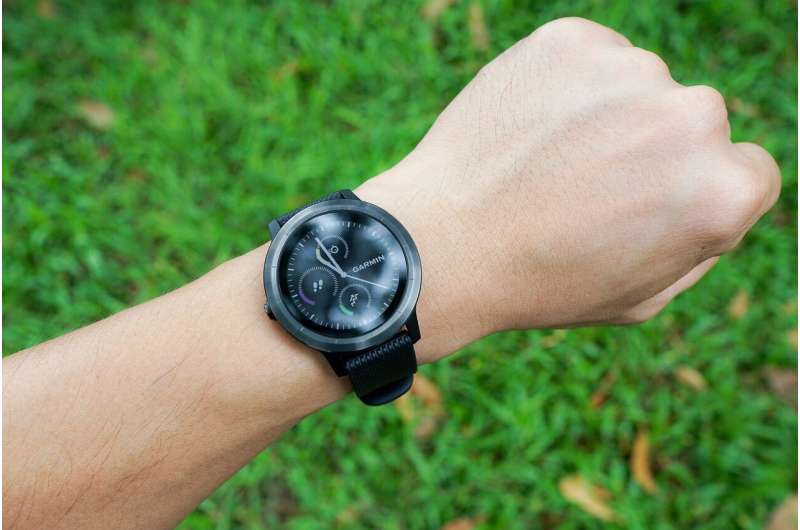
Individuals who want wearable fitness instruments, like good watches and health bands, might use them the least. Age, schooling and source of revenue are elements related to much less use of wearable fitness instruments amongst humans with and in peril for heart problems, in keeping with initial analysis to be introduced on the American Center Affiliation’s Clinical Periods 2022. The assembly, held in individual in Chicago and just about, Nov. 5-7, 2022, is a premier world trade of the most recent medical developments, analysis and evidence-based medical apply updates in cardiovascular science.
Wearable instruments are digital instruments worn on or just about the frame that observe and observe fitness or bodily job. Wearables might lend a hand to regulate cardiovascular fitness extra successfully, with options like bodily job tracking, heart-rate monitoring, coronary heart electric job tracing and extra.
“We could possibly use synthetic intelligence with fitness data from wearable instruments to lend a hand humans scale back their menace of coronary heart illness,” mentioned find out about lead writer Lovedeep S. Dhingra, M.B.B.S., a postdoctoral analysis fellow within the Cardiovascular Knowledge Science (CarDS) Lab on the Yale College of Medication in New Haven, Connecticut. “Given those advantages, it is vital to grasp who’s the use of those instruments. In our find out about, we evaluated what number of adults with coronary heart illness or in peril for coronary heart illness used wearables. We additionally checked out whether or not wearables’ use used to be equitable amongst sufferers of various age teams, intercourse, schooling, source of revenue ranges and various racial and ethnic teams.”
Dhingra and associates analyzed the fitness data of 9,303 adults within the U.S. who answered to the Well being Data Nationwide Tendencies Survey (HINTS) in 2019-2020. Specializing in contributors with heart problems or who have been susceptible to heart problems, akin to hypertension, Kind 2 diabetes, smoking or weight problems (BMI better or equivalent to 30kg/m2), researchers evaluated contributors’ responses within the survey query that requested if they’d used a wearable software to trace their bodily job or fitness within the final 365 days. Estimated wearable software use used to be cross-referenced via age, gender, race and ethnicity, schooling stage and source of revenue, in addition to contributors’ willingness to percentage their wearable information with fitness care execs.
“Even supposing the survey didn’t ask contributors about particular sorts of wearable instruments, examples of wearable instruments have been incorporated to lend a hand respondents resolution the query about whether they had used a wearable software within the earlier 365 days. The most typical wearable instruments incorporated good watches and health bands on the time of the survey, despite the fact that the class continues to amplify to incorporate different instruments,” Dhingra mentioned.
Whilst handiest 9,303 adults answered to the HINTS survey, this can be a nationally consultant pattern, and researchers have been in a position to make use of survey-weighted analyses to estimate national numbers. Their research discovered that individuals in peril for heart problems have been much less most probably to make use of wearable instruments. In particular:
- An estimated 3.6 million humans with heart problems and 34.4 million humans susceptible to heart problems within the U.S. used wearables. That interprets to just 18% of all humans with heart problems, and 26% of all humans in peril for heart problems.
- When compared, 29% of the full grownup U.S. inhabitants used wearable instruments.
- Simplest 12% of humans with heart problems older than 65 years of age used wearable instruments, although it’s estimated part of all humans with heart problems are older than age 65.
- When compared, 17% of humans with heart problems ages 50 to 64 years reported the use of wearables, and 33% of the ones within the 18 to 49-year age workforce with recognized heart problems used wearables.
- Whilst 22% of all humans susceptible to coronary heart illness are 65 years or older, handiest 14% of aged sufferers susceptible to coronary heart illness used wearable instruments.
- Other people with heart problems with an annual family source of revenue of $50,000 or extra have been 4 instances much more likely to make use of wearables than the ones with annual family earning not up to $20,000.
- Schooling past a school stage (submit baccalaureate stage) used to be related to 3.6-fold upper wearable use than those that gained a decrease schooling stage.
- Greater than 80% of humans in peril for heart problems answered that they might be prepared to percentage the fitness data amassed via their wearable software to fortify their fitness care. Variations in willingness to percentage fitness information throughout other demographic subgroups have been minor (age workforce, intercourse, race and ethnicity, schooling stage and family source of revenue).
“We have been stunned to search out that individuals with heart problems have been particularly much less most probably than humans with out heart problems to make use of wearable instruments, which implies those that are possibly to get pleasure from those applied sciences seem to be much less most probably to make use of them,” Dhingra mentioned. “We want to make certain that wearable instruments achieve the individuals who want them maximum, via making improvements to equitable get right of entry to and selling wearables as fitness instruments to lend a hand fortify fitness and reduce fitness disparities.”
“Wearables are efficient gear to lend a hand fortify cardiovascular fitness by way of enhanced self-monitoring. There may be just right proof that after humans make the most of wearables, they will take part in additional bodily actions. As well as, the rising skill of offering goal information for use all the way through patient-clinician interactions may be very promising, since prescription of bodily job from a fitness care skilled frequently will increase follow-through,” mentioned Bethany Barone Gibbs, Ph.D., FAHA, chair of the writing workforce of AHA’s June 2021 medical observation on bodily job as a vital element of first-line remedy for increased blood power or ldl cholesterol, and an affiliate professor and chair within the division of epidemiology and biostatistics at West Virginia College College of Public Well being in Morgantown, West Virginia. “This find out about highlights essential disparities in the usage of wearables. Those inequities in get right of entry to and use, if addressed, are a chance to fortify cardiovascular fitness specifically amongst humans in high-risk teams or under-resourced communities.”
A number of the find out about’s boundaries are that wearable use used to be self-reported, and the reaction charge to the query about wearables used to be handiest about one in 3 of all survey respondents. A better reaction charge might extra appropriately mirror wearable use within the U.S.
Co-authors are Arya Aminorroaya, M.D., M.P.H.; Evangelos Oikonomou, M.D., D.Phil.; Arash Aghajani Nargesi, M.D., M.P.H.; and Rohan Khera, M.D., M.S.
Additional information:
Summary: www.abstractsonline.com/pp8/?& … 1/presentation/16160
Quotation:
Learn about reveals individuals who want wearable fitness instruments essentially the most use them the least (2022, October 31)
retrieved 9 February 2023
from https://medicalxpress.com/information/2022-10-people-wearable-health-devices.html
This report is topic to copyright. Aside from any honest dealing for the aim of personal find out about or analysis, no
phase is also reproduced with out the written permission. The content material is supplied for info functions handiest.
Supply Through https://medicalxpress.com/information/2022-10-people-wearable-health-devices.html



